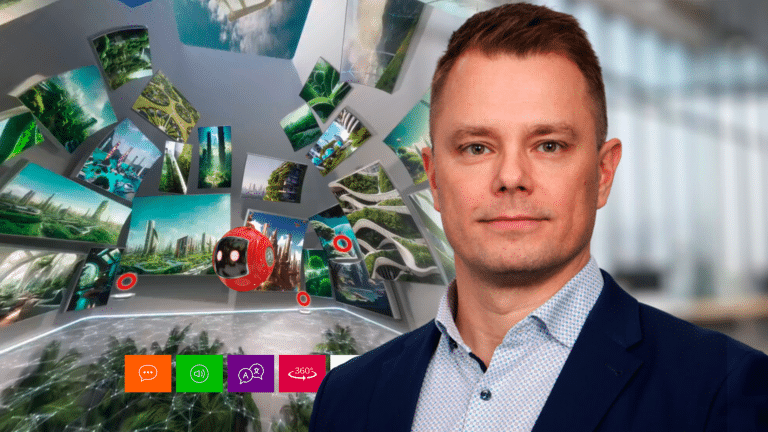Internet of Things (IoT) and augmented reality (AR) are match made in heaven. Saving money, making work more efficient, safe, fast, accurate… the benefits are numerous and clear. There are, however, some questions that often preoccupy the minds of people when talking about IoT and AR applications. Stereoscape’s former Development Director Matti Gröhn and CTO Ferhat Sen give answers in plain English.
Q: IoT and AR are a match made in heaven. But what are the prerequisites, for example, what is the right data format for IOT data used in AR applications?
A: The right data format is standard and well documented. Any standard data format that provides the necessary information for the application in question is good. One commonly used, for example, is JSON. Also, what comes to documentation the AR applications are no exceptions to any other applications; the data structures and content need to be well described. AR as such doesn’t bring any extra claims for the data format.
Q: IoT means real-time data. But how real are we actually talking about in AR applications?
A: This is completely context dependent. That is, how frequent updates are needed depends fully on what is being measured. For example, for measuring changes in room temperature you don’t need to update the data every millisecond; once a minute is already good enough.
Q: How can you document the events in AR applications? I.e. how can it be seen afterward what route did the person take, which sensors and what data did he see etc.?
A: Short answer: record every necessary event into a log file. For getting an estimate for what route the person actually took and what he saw, or was supposed to see, you need to use indoor tracking. Indoor tracking has taken big steps and is now mature enough for commercial use, even AR applications. If you also need to know afterward what the person was actually seeing – or where did he look – you can record the device camera view and use gaze-tracking to get the exact knowledge. Everything can be saved in the log files for very accurate documentation, but how much and what is necessary to save on the log files depends, once again, on the case.
Q: There are plenty of augmented reality devices on the market already; from tablets and smartphones to smart helmets and smart glasses; what are the pros and cons of the existing devices and where is the development leading to?
A: Pokémon Go took the world by storm a few years ago. Since then the amount of different AR applications for mobile devices has been increasing rapidly. However, for industrial IoT AR applications, it is often essential to keep heads-up and hands-free. Which in turn means that you need to use head-mounted devices instead of tablets and smartphones.
With head-mounted devices the problem is often to find the right balance with the field of view – i.e. the size of the area where data can be displayed – and how much the display itself obscures the person’s view. Naturally, small smart glasses have a smaller area to display the data than larger helmets or devices with visors, but in turn, they block less of the real-life view. For user comfort it is also important to have devices that are not too heavy.
We have used and tested, for example, Microsoft HoloLens and RealWear HMT-1 for some time already and have seen how rapid the development is. It has already advanced to the point when it’s feasible to pilot the devices in different tasks and parts of processes. A full-scale release of applications, that make the IOT and AR match made in heaven come true, will be a lot easier when testing and finding the benefits are done well and in advance.
Read more:
Enterprise AR/VR – proving the business case
How does Augmented Reality increase real-world productivity?


